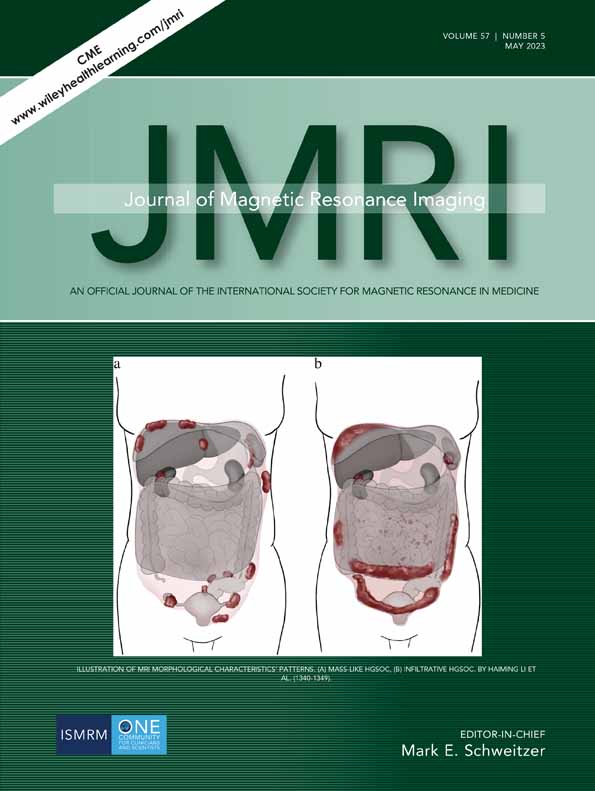Preoperative Assessment of Blood Vessels and Intratumoral Microbleeds in Brain Tumors Based on a 3D Contrast-Enhanced T1-Weighted Flow-Sensitive Black-Blood Sequence
Xin Cao, Kun Lv, and Xuyang Yin contributed equally to this study.
Abstract
Background
Three-dimensional (3D) contrast-enhanced T1-weighted flow-sensitive black-blood (CE-T1WI FSBB) is a newly developed black blood sequence by adding motion probing gradient pulses to gradient echo (GRE) sequences, which has important value for the preoperative assessment of tumor brain blood supply vessels and intratumoral microbleeds.
Purpose
To compare 3D CE-T1WI FSBB and 3D contrast-enhanced fast spin echo (FSE) sequence for T1WI for preoperative assessment of blood vessels and microbleeds in brain tumors and to investigate the correlation between visible vessels and microbleeds.
Study type
Prospective.
Subjects
One hundred and seventy-five patients with brain tumors, 65 were male, 110 were female. Including histologically confirmed 73 meningiomas, 23 schwannomas, 20 gliomas, 7 hemangioblastomas, 5 metastases, 2 lymphomas, 2 hemangiopericytomas, 2 germ cell tumors, 1 craniopharyngioma, and 1 cholesteatoma.
Field Strength/Sequence
A 3-T, CE-T1WI FSBB, GRE; 3-T, CE-T1WI, FSE.
Assessment
Three neuroradiologists counted the number of intratumoral vessels on CE-T1WI and CE-T1WI FSBB images separately, and they counted the number of intratumoral microbleeds on CE-T1WI FSBB images. Brain tumors were classified into grade I, grade II, and grade IV according to the World Health Organization (WHO) grading. Differences in the ability of CE-T1WI FSBB and CE-T1WI to display intratumoral vessels were compared. The mean counts of three observers were used to study the correlation between vessels and microbleeds.
Statistical Tests
Two-way random intraclass correlation coeficient (ICC) was used for inter-reader agreement regarding intratumoral vessel and microbleed counts, and the linear regression analysis (with F-test) was used to study the correlation between intratumoral vessels and microbleeds based on CE-T1WI FSBB (α = 0.05).
Results
Inter-reader agreements for intratumoral vessel count on CE-T1WI (ICC = 0.93) and CE-T1WI FSBB (ICC = 0.92), and the agreement for intratumoral microbleed count on CE-T1WI FSBB (ICC = 0.99) were excellent. There were statistically significant differences in intratumoral vessel counts between CE-T1WI and CE-T1WI FSBB using Mann–Whitney U -test: image readers could identify more intratumoral vessels on CE-T1WI FSBB images, particularly for meningiomas, schwannomas, gliomas, and WHO grade I tumors. The number of intratumoral vessels had a significant positive effect on the number of intratumoral microbleeds (microbleeds = 5.024 + 1.665 × vessels; F = 11.51).
Data Conclusion
More intratumoral vessels could potentially be identified using a 3D CE-T1WI FSBB sequence compared to a CE-T1WI sequence, and the number of intratumoral vessels showed a positive linear relationship with the number of intratumoral microbleeds, which might suggest that brain tumors with rich blood supply were more prone to intratumoral microbleeds.
Evidence Level
2
Technical Efficacy
Stage 3




